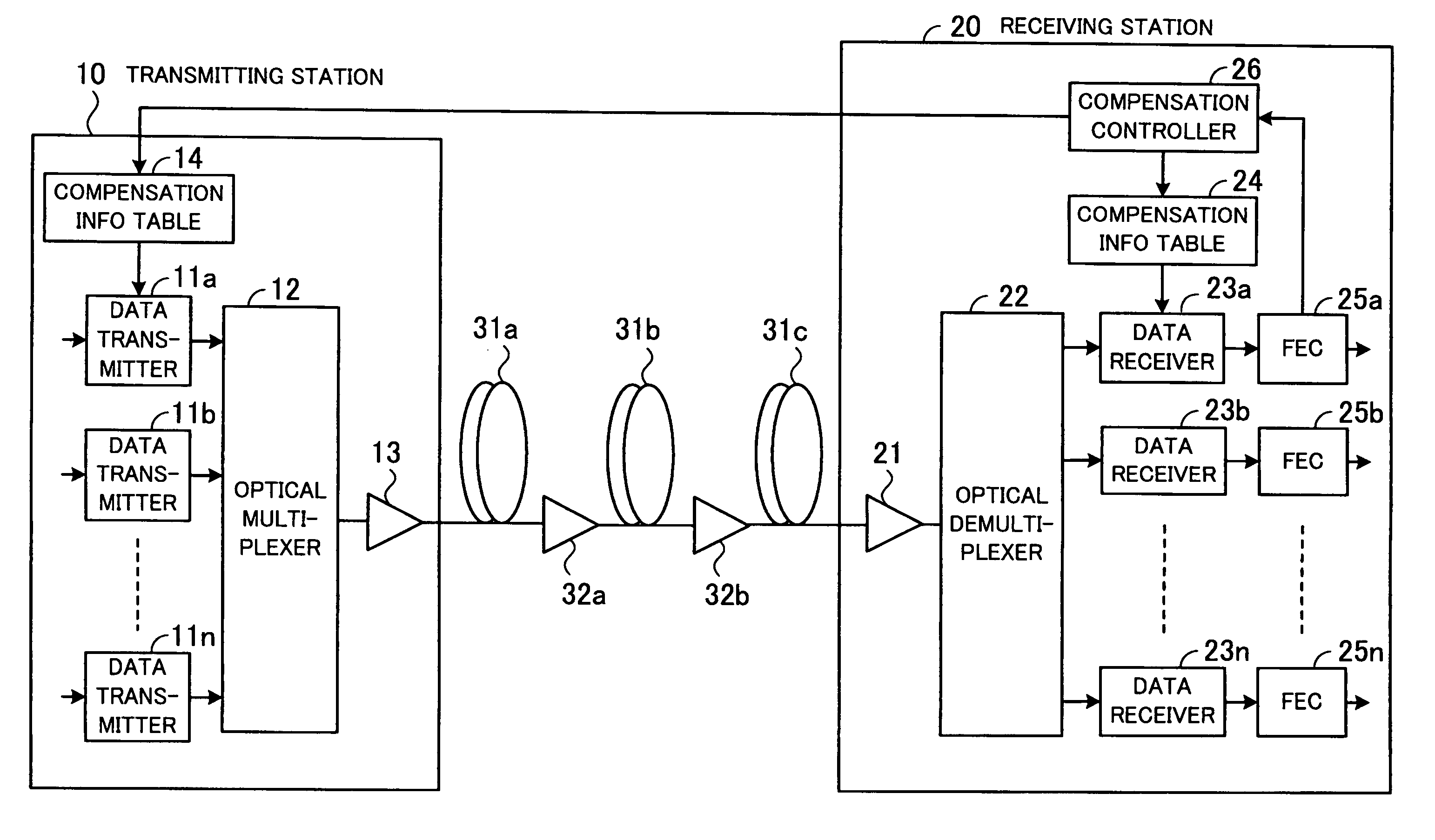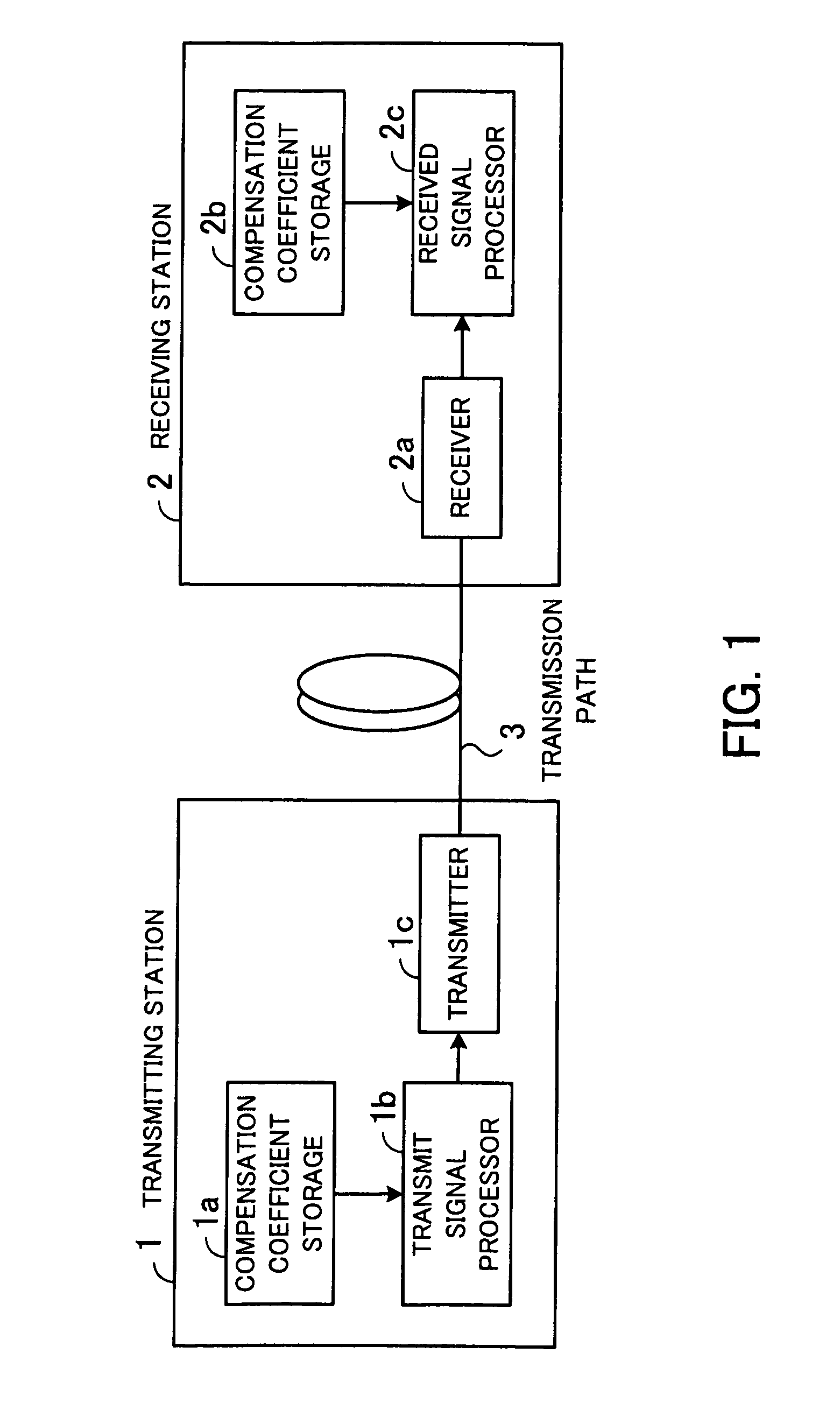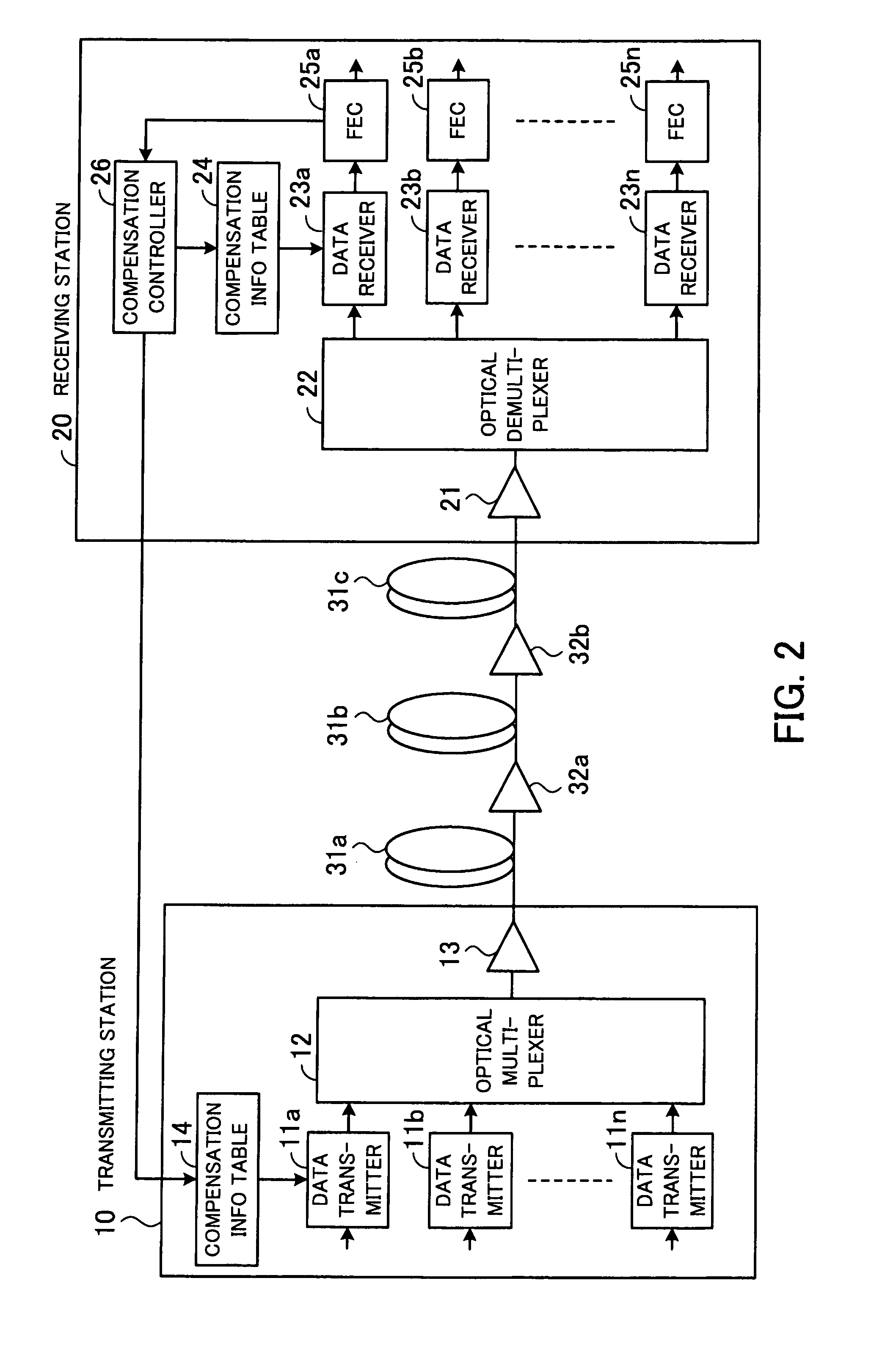Optical transmission system
a transmission system and optical transmission technology, applied in the field of optical transmission systems, can solve the problems of waveform distortion that cannot be significantly reduced, signal quality degradation, etc., and achieve the effect of efficient reduction of waveform distortion
- Summary
- Abstract
- Description
- Claims
- Application Information
AI Technical Summary
Benefits of technology
Problems solved by technology
Method used
Image
Examples
first embodiment
[0037]the present invention will be now described in detail with reference to the drawings.
[0038]FIG. 2 illustrates an optical transmission system according to the first embodiment. In FIG. 2, a transmitting station 10 transmits an optical signal, and a receiving station 20 receives the optical signal. The transmitting and receiving stations 10 and 20 are connected to each other by optical fibers 31a, 31b and 31c and repeaters 32a and 32b.
[0039]The transmitting and receiving stations 10 and 20 share in the compensation for SPM-GVD induced distortion caused on the transmission path constituted by the optical fibers 31a, 31b and 31c and the repeaters 32a and 32b. For example, the transmitting station 10 performs distortion compensation covering 70% of the transmission path, and the receiving station 20 performs distortion compensation covering the remaining 30%.
[0040]The share ratio of dispersion compensation is adjusted by looking up the quality of the signal received by the receivi...
second embodiment
[0099]FIG. 9 illustrates an optical transmission system according to the In FIG. 9, like reference numerals refer to like elements also appearing in FIG. 2, and description of such elements is omitted. Also, in FIG. 9, the optical fibers 31a, 31b and 31c and the repeaters 32a and 32b shown in FIG. 2 are omitted.
[0100]A compensation information table 61 holds compensation data for compensating for distortion of the signal waveform of the data transmitter 11a caused under the influence of the signal input to the channel (data transmitter 11b) adjacent to the data transmitter 11a.
[0101]For example, the compensation information table 61 stores amplitude compensation data and phase compensation data that are used to compensate for distortion of the signal waveform of the data transmitter 11a when the signal input to the data transmitter 11b, which is the channel adjacent to the data transmitter 11a, is “000”. Likewise, the compensation information table 61 stores amplitude compensation...
third embodiment
[0127]FIG. 11 illustrates an optical transmission system according to the In FIG. 11, like reference numerals refer to like elements also appearing in FIG. 2, and description of such elements is omitted. Also, in FIG. 11, the optical fibers 31a, 31b and 31c and the repeaters 32a and 32b shown in FIG. 2 are omitted.
[0128]As shown in FIG. 11, the transmitting station 10 additionally includes a polarization combiner 71, and the receiving station 20 additionally includes a polarization separator 72.
[0129]The polarization combiner 71 combines the optical signals output from the data transmitters 11a and 11b such that their polarizations are orthogonal to each other. The optical signals from the data transmitters 11a and 11b have an identical wavelength. Namely, the polarization combiner 71 combines the two modulating signals of an identical wavelength together with their polarizations orthogonalized, thereby making good use of the signal bandwidth.
[0130]The polarization separator 72 sep...
PUM
| Property | Measurement | Unit |
|---|---|---|
| length | aaaaa | aaaaa |
| chromatic dispersion | aaaaa | aaaaa |
| dispersion | aaaaa | aaaaa |
Abstract
Description
Claims
Application Information
 Login to View More
Login to View More - R&D
- Intellectual Property
- Life Sciences
- Materials
- Tech Scout
- Unparalleled Data Quality
- Higher Quality Content
- 60% Fewer Hallucinations
Browse by: Latest US Patents, China's latest patents, Technical Efficacy Thesaurus, Application Domain, Technology Topic, Popular Technical Reports.
© 2025 PatSnap. All rights reserved.Legal|Privacy policy|Modern Slavery Act Transparency Statement|Sitemap|About US| Contact US: help@patsnap.com



